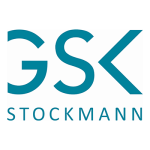Luxembourg continues to be the leading hub for the establishment of investment funds in Europe. Despite the Covid-19 pandemic, Luxembourg has seen a continued growth of the assets under management (AUM), increasing to the staggering amount of €5.9 trillion as at the end of December 2021, which shows a continuous and stable growth and development in the market.
One of the trends that has been driving growth and development in the Luxembourg fund industry for the last two years is sustainable finance.
In 2021, the credit rating agency Moody’s acknowledged this trend by certifying Luxembourg’s good environmental, social and governance (ESG) performance with a triple-A rating, for the first time ever. The positive ESG credit impact score given to the Grand Duchy reflects low exposure to environmental and social risks, top-performing governance as well as a very high capacity to respond to market disruptions and, of course, continued efforts in this area by the government and the market players.
In the context of a global shift towards sustainable finance, driven not least by an ambitious regulatory agenda in the EU as well as international pressure from lawmakers and scientists, Luxembourg continues to advance quickly on this topic enhancing quality and quantity of sustainable finance products and services. It can be argued that the reshaping of finance and redirection of institutional and private capital towards greener and more sustainable environmental objectives and investments is accelerating.
The main drivers towards the ESG liquidity flows redirection are: (i) investor demand, based on a changing ‘mindset’ towards sustainability in general; (ii) political and regulatory pressure; and (iii) reputational considerations.
This trend is expected to continue, however, not without some challenges.
Regulatory challenges – SFDR
The EU Sustainable Finance Disclosure Regulation, 2019/2088 (SFDR), was adopted at the end of 2019 and amended by the EU Taxonomy Regulation, 2020/852 (Taxonomy Regulation) in 2020. The implementation process of the SFDR has completed its first step of its long-time journey, consisting in the mandatory application of high-level principle-based requirements under the SFDR as of March 10 2021.
The SFDR requires investment fund managers such as AIFMs, UCITS management companies and investment firms (financial market participants), to comply with harmonised rules on transparency with regard to sustainability risks, the consideration of adverse sustainability impacts and the provision of sustainability-related information.
The set of disclosure requirements introduced by the SFDR concern two different levels: entity level (i.e. applicable at the level of the managers such as AIFMs), and product level (i.e. applicable at the level of AIFs, UCITS, separate accounts).
Since March 10 2021, the SFDR-related disclosures have to be complied with by financial market participants. In particular, financial market participants had to publish the following on their websites:
How they integrate sustainability risks into investment decision-making processes;
Whether or not they consider principal adverse impacts that their investment decisions may have on sustainability factors;
How remuneration policies take sustainability risks into account; and
ESG information about the investment funds themselves, such as disclosures in offering documents and prospectuses.
Moreover, for the first time ever, different categories of financial products were defined depending on the level of ESG compliance, and which are subject to additional disclosure requirements: There is the so-called ‘Light Green Product’ or ‘Article 8 Product’ – which only promotes environmental or social characteristics (or a combination of those characteristics).
There is also the so-called ‘Dark Green Product’ or ‘Article 9 Product’, that has sustainable investment as its principal objective. Those types of products have to comply with additional product level disclosures in comparison to so-called ‘neutral products’, sometimes referred to as ‘Article 6 Products’ and that do not take any ESG aspects into account.
It is important to highlight that as of now, mandatory transparency disclosures have to be complied with by financial market participants only on a best effort basis, given that the level 2 measures – so-called Regulatory Technical Standards (RTS) that were expected to provide detailed formal and technical guidelines on how to implement the above requirements in practice – are not yet applicable.
This situation created challenges for the financial market participants: While they were obliged to apply the SFDR disclosure rules, in the absence of finalised RTS, it was not clear which level of detail to disclose, or for example which sustainability factors should be considered.
It is also worth mentioning that the interpretation of the SFDR itself raised a number of questions and uncertainties.
RTS were expected to apply as of January 1 2022, however, the EU Commission, in its letter of 25 November 2021, informed the EU Parliament and the Council that it would not be able to adopt the relevant RTS and therefore, postponed its application until 1January 1 2023.
The draft RTS was submitted to the EU Commission by the European Supervisory Authorities in two tranches, first in February 2021 (i.e. SFDR RTS) and second in October 2021 (i.e. Taxonomy Regulation-related RTS, including the consolidated version thereof), which, according to the EU Commission, did not leave it enough time for a proper review.
The financial market participants, however, should already prepare for such disclosures, based on the latest RTS, including starting collecting the relevant data for such purposes.
What is next?
The March 10 2021 deadline is just the first step of a long-term sustainable finance journey, and of the SFDR implementation.
One important next step is obviously the finalisation and endorsement of the RTS. RTS provide detailed rules on the content, methodologies and presentation of disclosures under the SFDR. That includes, for example, rules on how the statement relating to potential adverse impacts on sustainability factors should be published on an entity’s website; or how disclosures for Article 8 and 9 Products should look like in the offering documents and prospectuses. They also contain mandatory templates to be used by financial market participants in order to meet the disclosure obligations required under the SFDR.
Compliance with those RTS, will be the next hurdle for the industry. The new disclosure rules will require huge amounts of ESG data which is currently not available. For example, the data necessary to disclose information about each mandatory sustainability factor set out in the draft RTS would need to be collected about every portfolio item of an investment fund.
|
|
“Luxembourg has seen a continued growth of the assets under management, increasing to the staggering amount of €5.9 trillion as at the end of December 2021” |
|
|
For big parts of entire asset classes this data simply does not exist, and will be difficult to obtain in particular if the investment targets are not located in the EU. In time, this can be expected to change, but in the meantime the critical lack of data is something that has to be dealt with.
Fund managers that want to position themselves as active leaders in ESG and sustainable finance industry, should use the current interim time to identify (and try to collect) the required data for the reporting and to put in place workflows and teams to deal with this. Larger fund managers also create dedicated ESG internal committees, procedures and train their teams in order to perform the required analysis and due diligence on assets in-house.
Various mandatory disclosure and reporting templates would apply as of January 1 2023 and therefore, it is crucial to understand that there is no time to lose, decisions should be taken now, if not yet done.
Another aspect that should not be overlooked in this context is that, depending on the location of the fund initiators and managers, it might be necessary for them to comply with several regulatory standards for ESG disclosures at the same time, and which are not identical. An example would be an investment fund that is based in the EU but also distributed in the UK, US or Asia, as it can be expected that all those regions will develop their own ESG disclosure requirements applicable to financial products.
Impact of the Taxonomy Regulation on the SFDR
Finally, another impact on the SFDR is linked to additional sustainability-related disclosures introduced by the Taxonomy Regulation in pre-contractual and reporting documents in relation to Article 8 and 9 Products. The Taxonomy Regulation is, in principle, a set of rules that is independent from the SFDR. However, for the definition of the environmental aspect (the ‘E’ of ‘ESG’ in this context), the SFDR refers to the Taxonomy Regulation.
In addition, the Taxonomy Regulation provides for disclosure obligations in relation to ecological aspects for the aforementioned two new ESG fund categories. By way of example, it defines for Article 9 Products what could be considered as an environmental objective that such product could contribute to; for Article 8 Products, the Taxonomy Regulation obliges them to publish a disclaimer in the sense that the ‘do not significantly harm’ principle applies only to investments that comply with EU criteria for environmentally sustainable economic activities.
These disclosure requirements resulting from the Taxonomy Regulation apply as of January 1 2022 with regard to the first two environmental objectives (climate change mitigation and adaptation), and as of January 1 2023 for the other environmental objectives.
At the end of 2021, the EU Commission published the delegated act that specifies the technical screening criteria for determining the conditions under which an economic activity qualifies as contributing substantially to climate change mitigation or adaptation and for determining whether that economic activity causes no significant harm to any of the other environmental objectives. The delegated acts in relation to the other environmental objectives are expected to follow around summer 2022. Therefore, it is not clear at the current stage whether applicability as of January 1 2023 is still contemplated in respect of four other environmental objectives.
These additional deadlines and compliance requirements from different regulatory texts add complexity for fund managers and initiators. As a reaction thereto and, in order to simply the implementation process, the final report on draft RTS published on October 22 2021, contained a consolidated draft regulatory technical standards for disclosures based on both the Taxonomy Regulation and the SFDR. Moreover, the EU Commission in its communication confirmed that it would bundle the SFDR RTS and the Taxonomy Regulation-related RTS in one single delegated act expected to apply as from January 1 2023.
Outlook
There are multiple challenges for investment funds, their managers and initiators linked to compliance with ESG related rules. Uncertainty of interpretation, lack of finalised guidelines, various deadlines that have to be complied with and lack of available data that is necessary to comply with the disclosure requirements are not to be taken lightly.
One can add to this the general tendency over the last years to significantly increase the granularity and level of detail in applicable rules, resulting in regulations and RTS that are extremely voluminous and often difficult and time consuming to absorb and monitor. Last, but not least, staff with expertise in this sector have to be identified, hired or trained.
On the other hand, it is clear now that these rules are here to stay, and that sustainable finance is a long-term trend with significant opportunities for the fund industry. Mitigating the above challenges should therefore be the strategy, by getting familiar with the new rules and taking steps to implement them as far as possible. Those that are able to do so in a cost-efficient manner are likely to be those that can benefit from the opportunities in terms of performance, growth of assets under management and reputation that sustainable finance products can bring.
Tendency shows that bigger fund managers are better prepared for the upcoming regulatory challenges and are ready and capable to implement those regulatory provisions in their internal processes and procedures.
We observe that ESG funds have grown rapidly over the recent years and the trend will definitely continue in the years to come.
Click here to read all the chapters from IFLR ESG EMEA Report 2022

Marcus Peter
Partner
GSK Stockmann
T: +352 2718 02 50
Marcus Peter is a partner at GSK Stockmann. He earlier worked in a leading independent Luxembourg law firm for 12 years (four years as partner), before opening the Luxembourg office of GSK Stockmann in 2016.
Marcus specialises in investment funds, PE and venture capital as well as corporate and M&A law. He regularly speaks at investment fund events and is also a member of the Cross-Border Business Lawyers Network.
Marcus studied at Rostov-na-Donu State University and Saarland University and is qualified in both Germany and Luxembourg.

Irina Stoliarova
Senior associate
GSK Stockmann
T: +352 2718 0252
E: irina.stoliarova@gsk-lux.com
Irina Stoliarova is a senior associate at GSK Stockmann in Luxembourg.
Irina has experience advising national and international clients on all legal and regulatory aspects in the fields of investment funds (UCITS, AIFs, regulated and non-regulated structures) and private equity as well as corporate and M&A matters. She is admitted to the Bar in Luxembourg and speaks Russian, English, French, German and Luxembourgish. Irina also advises the clients on various regulatory and ESG matters.
Irina holds a master’s degree in European and international financial law (LLM) from The University of Luxembourg, a master’s degree in business law – corporate tax management from the University of Nice Sophia Antipolis, France. She is a member of the Luxembourg-Russia Business Chamber and of the Association of the Luxembourg Fund Industry (ALFI).



